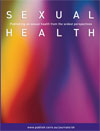
Sexual Health
Volume 18 Number 3 2021
Over the past decade, Thailand belongs to one of the three most common countries of origin among immigrants diagnosed with HIV in Sweden. Findings from this cross-sectional study showed that women who had never had an HIV test in Thailand continue not to be tested in Sweden. The majority reported a significant need for information related to sexual and reproductive healthcare services. Efforts are needed to increase access to services and information related to sexual and reproductive healthcare.
In young men who have sex with men (YMSM), those who showed less-visible faces on their online dating applications had lower confidence in their ability to use a condom. This, in turn, was associated with higher frequencies of unprotected sex with male sexual partners they met from online dating applications. However, these findings were observed only in highly attractive YMSM.
SH20190 Abstract | SH20190 Full Text | SH20190PDF (242 KB) Open Access Article
The epidemiology of hepatitis C virus (HCV) infection in people living with HIV has been evolving, with increasing evidence of sexual transmission identified predominantly in HIV-positive men who have sex with men (MSM). This retrospective cohort study revealed an increasing trend of HCV incidence rate and associated factors included younger age at HIV diagnosis, HIV acquisition via MSM exposure and recent syphilis acquisition. Preventive and behavioural interventions should be targeted at HIV-infected individuals engaged in high-risk sexual behaviour.
SH20197 Abstract | SH20197 Full Text | SH20197PDF (424 KB) | SH20197Supplementary Material (354 KB) Open Access Article
Unintended pregnancy and abortion are a relatively common experience in women’s reproductive lives. Women living in regional and rural settings have limited access to abortion services; this study has demonstrated the acceptability of service provision through a regional Australian sexual health service. Primary healthcare settings are well placed to reduce the inequity in access to abortion services experienced by women living outside of major metropolitan settings.
Do you know about ‘72 hours of prime time’, which refers to non-occupational post-exposure prophylaxis (nPEP) to prevent HIV transmission after a single high-risk exposure? This paper found that there is a high willingness to use nPEP and a positive attitude towards promoting nPEP among male clients of female sex workers in China, but there may be some potential barriers. The results provide scientific basis for the next step to develop nPEP related researches and policies formulation.
Men attending sex-on-premises-venues (SOPV: premises for anonymous sex between men) are at risk of STIs and HIV. We compare men-who-have-sex-with-men (MSM) attending a SOPV and those attending a traditional sexual health clinic and find SOPV attenders were more likely to have a female partner. The men attending the SOPV were also more likely to have some sexually transmissible infections. These findings would be of use in health promotion messaging and future design of health services.
SH21029Free online chlamydia and gonorrhoea urine test request in Queensland, Australia: convenience of home sample collection versus pathology collection centre attendance for faster results
 , Shelley Peardon-Freeman, Kim McFarlane, Simone Braithwaite, Deepa Gajjar, Pamela Murch and Catherine Spucches
, Shelley Peardon-Freeman, Kim McFarlane, Simone Braithwaite, Deepa Gajjar, Pamela Murch and Catherine Spucches
Many common infections transmitted by sexual contact remain undiagnosed in Australian young people. When offered a choice, users of an online testing service in Queensland preferred home sampling kits over a visit to a local pathology service, despite longer wait times for results. Ongoing provision of online testing choices needs to balance service costs, user convenience and ability to integrate with clinical services for more complex sexual health care.
SH21015Internal and external sexual consent during events that involved alcohol, cannabis, or both
Many people engage in drunk sex or high sex and still label that experience as consensual. We found that feelings related to sexual consent did not differ across sexual events that included only alcohol, only marijuana, or neither substance; however, these feelings diminished during sexual events that involved both substances. Sexual health education programs should develop nuanced approaches to teaching people how to navigate sexual consent and substance use – particularly when greater amounts are consumed or multiple drugs are used.
SH20185Hepatitis B prevalence association with sexually transmitted infections: a systematic review and meta-analysis
 and James G. Kahn
and James G. Kahn
Chronic hepatitis B virus (HBV) infection is a major source of morbidity and mortality in the United States, and the most common source of HBV infection among adults is sexual contact. We conducted a comprehensive systematic review and meta-analysis of the association of hepatitis B prevalence among persons with current and past sexually transmissible infection and found the prevalence of hepatitis B significantly associated with sexually transmissible infection. These findings can inform potential recommendations for expanded hepatitis B testing.
In 2016, we surveyed all state health departments in the USA and the District of Columbia (DC). We identified 1610 STD/HIV DIS positions in the USA (85% filled) and 379 DIS supervisory positions. States with more primary and secondary syphilis cases had more DIS. DIS participated in public health emergencies in 57% of states. Most states indicated that the DIS workforce was not sufficient for STD/HIV prevention.



